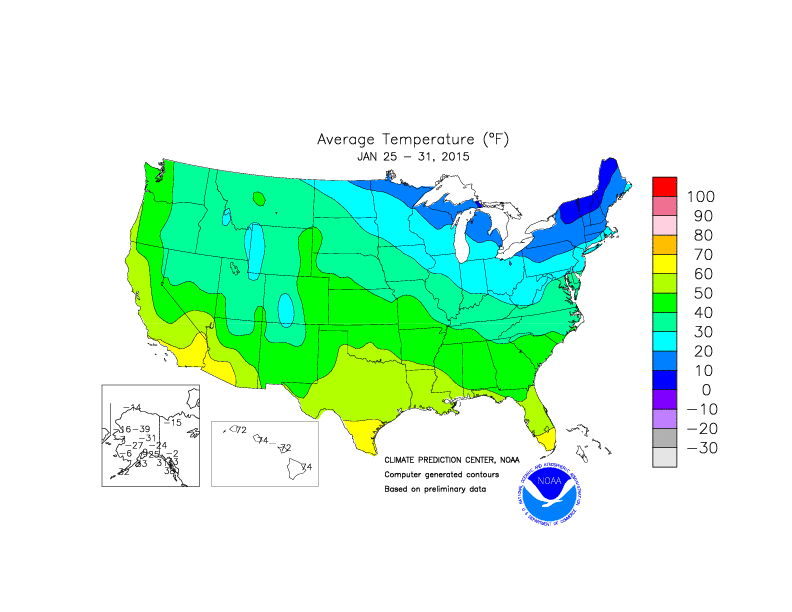Spring
Fever for Hummingbirds?
Testing
a Temperature Theory of Migration
| Time:
1 period + occasional time over several weeks |
Preparation: To test whether hummingbirds arrive along with a specific average temperature, first find out about when these migrants generally return to your region each spring. Begin the study about a month before their average arrival date.
- Click
on this map to see a larger one.
The lines and colored bands show places that had the same average temperatures
last week. These will migrate across the continent as temperatures warm
in the spring. (Look at or print a new map each week!)
* Can you find the approximate location of your hometown? What was its average temperature last week?
* How did that compare with your temperature records? If they varied, explain why you think they did.
* Name another city or state that had the same average temperatures at yours did.
* Name another city or state that had higher average temperatures.
(Definition: The lines that connect places with the same average temperatures are called isotherms.)
 Calculate
your average weekly temperature.
Think about how you could find that — or simply use Our
Average Weekly Temperatures data sheet.
Calculate
your average weekly temperature.
Think about how you could find that — or simply use Our
Average Weekly Temperatures data sheet.
- Each
week, ask yourselves, "Have we seen any hummingbirds yet?"
Continue to calculate your average weekly temperature and keep
your eyes peeled! Finally, ask yourselves this question:
What was our average weekly temperature when hummingbirds showed up in our area?
- Using Journey North's reported hummingbird sightings, keep track of the dates of the first 10 or so sightings in one state or province. Then calculate an "average first arrival date" for hummingbirds in that area. Then look at an average weekly temperature map; what was the average temperature on the date the hummers arrived?
Making Connections
- Describe the patterns you see on the temperature and migration maps. Do you think there is a relationship between temperature and hummingbird migration?
- Which of hummingbirds' basic needs could be affected by temperature, and how? >
- What other factors might influence the date of the hummingbirds' arrival?
- Do
you see a connection between the arrival of hummingbirds and the appearance
of flowers or insects? What do you think causes them to appear?
Digging
Deeper
Choose a faraway
Journey North school and see if you can predict the arrival of the first
robins and earthworms in their location. You can find the daily high
and low temperatures
of most cities via these links or in the newspaper. You can also exchange
temperature data online with another class. Make your own classroom connection
or join the Journey North Classroom
Exchange.



